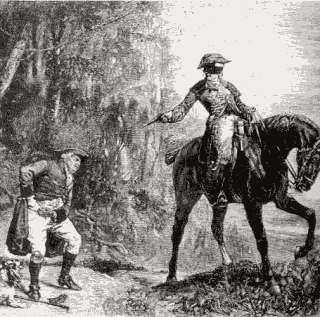[It seems that] the VWFA would not only be recruited
at an early stage for allowing low-level (script processing) word processing as
has been previously instantiated (Pammer et al., 2004; Dehaene and Cohen,
2011), but also at a later stage for gating high-level (lexico-semantic)
processing. Such late semantic gateway would not be selective to the VWFA but
rather emerge in the posterior LOT and extend anteriorly to the VWFA. (Levy et al., 2013)
The VWFA is described in the above study as a
“bottleneck to consciousness.” It helps us not only to recognize words on a
page but also to understand what the words mean. To me, this makes sense. I’m
better at thinking through an idea and its implications if I can write it down
and then read it. There thus seems to be a single mental pathway that does
double duty: processing character strings (words) and processing higher-level
concepts.
Population
differences
The VWFA functions differently in different human
populations. The difference is striking between people who use alphabetical
script, where each symbol represents a sound, and those who use logographic
script, where each symbol represents an idea. Chinese subjects process their
idea-based symbols with assistance from other brain regions, whereas Westerners
process their sound-based symbols only in the VWFA (Liu et al., 2008).
Similarly, dyslexics activate this brain region in ways that differ by
linguistic background, apparently because of differences in spelling and
writing (Paulesu et al., 2001).
Hardwired or softwired?
For Dehaene and Cohen (2011), the VWFA is not a
hardwired mental organ. They argue that it occupies the same area of the brain
because that is where we can most easily recruit neurons when learning to
recognize words. But why, then, does this recruitment happen so fast in young
children? When kindergarten children were asked to play a grapheme/phoneme
correspondence game, their VWFAs preferentially responded to pictures of letter
strings after a total of 3.6 hours over an 8-week period. It is worth noting
that only a few of these children could actually read, and even then only at a
rudimentary level (Brem et al., 2010; Dehaene et al., 2010).
But the alternative view, hardwiring, is also hard
to accept. Reading began not in the Paleolithic but in historic times, less
than 6,000 years ago. Widespread literacy is even more recent, and there are
still many societies where most people cannot read or write. How could an
entirely new mental organ have evolved over so short a time?
Yet this alternative view may not be so farfetched.
Let’s examine the two main objections.
Was there not
enough time for natural selection to work?
The VWFA did not evolve out of nothing. It seems to
be a population of neurons that originally served to recognize faces (Dehaene and Cohen, 2011). This sort of recycling is a common pathway for natural
selection and explains much of the apparent rapidity of evolution. A complex
mental adaptation may take a long time to evolve, but much less time is needed
to develop an exaggerated version of it or to alter when and how it becomes
activated (Harpending and Cochran, 2002).
Indeed, parallel to the way alphabetical reading
ability has spread historically and geographically, there is a similar spread
of the latest variant of ASPM, a gene implicated in the regulation of brain
growth. In humans, a new variant arose about 6,000 years ago in the Middle
East. It eventually became more prevalent in the Middle East (37-52% incidence)
and Europe (38-50%) than in East Asia (0-25%) (Frost, 2011; Mekel-Bobrov et al., 2005).
Would it have
benefited too few people to have been favored by natural selection?
There is some debate over the relative recentness of
literacy. It is true that before the modern era only a small minority could
read long texts of cursive writing. But the ability to read short texts of
block writing was much more widespread, as evidenced by the prevalence of
graffiti and storefront signs. We should also keep in mind that the literate
few contributed disproportionately to the gene pool of subsequent generations.
Clark (2007) has shown that the English lower class is largely descended from
people who were middle or upper class a few centuries ago. In the ancient
world, there was a perception that scribes enjoyed reproductive success. The
Book of Sirach [39: 11] states: “If [a scribe] lives long, he will leave a name
greater than a thousand.”
Gene-culture
co-evolution?
There may have been positive feedback between
reading ability and the cultural opportunities it created. One example is the
scientific revolution in Western Europe (15th - 18th centuries), which took off once a critical mass of
scholars could read each other’s papers. In short, reading
and writing are advantageous to the extent that other people can read and
write. While this kind of feedback loop is self-evident, its biological
implications may be less so. The same feedback loop would have steadily
ratcheted up selection for the VWFA and, subsequently, for higher-level
faculties. This might explain why the VWFA evolved beyond word recognition per se and towards lexico-semantic
tasks.
Future research
One priority would be to study the VWFA in
populations that have become literate only in recent times. What form, if any,
does it take in such people? A study in New York elementary schools found that
VWFA activation varied with socioeconomic status. In students from high SES
families, activation seemed to be more hardwired and less dependent on
familiarity with the way sounds are visually represented. Unfortunately, there
was no attempt to break the data down by ethnic background (Noble et al., 2006).
At present, high VWFA activation is attributed to an
environment where reading material is accessible and parents very supportive,
this being in turn attributed to high SES. Yet reading material is ubiquitous
nowadays. And how crucial is parental support? As a child, I read almost always
on my own with little encouragement at home or school. My teachers were in fact
annoyed by my habit of sneaking into the small storage room where old textbooks
and encyclopedias were kept (we had no library). “If you’ve finished your
assignment, stay at your desk. Is that clear?!”
Nonetheless, I read voraciously, even when I
couldn’t understand half of what I read. Strange new words were a source of
pleasure, and I would often read and reread the same texts simply because I
liked the flow of the words and the images they conjured up.
References
Brem, S., S. Bach, K. Kucian, T.K. Guttorm, E.
Martin, H. Lyytinen, D. Brandeis, and U. Richardson. (2010). Brain sensitivity
to print emerges when children learn letter-speech sound correspondences, Proceedings of the National Academy of
Sciences U.S.A., 107, 7939–7944.
http://psyserv06.psy.sbg.ac.at:5916/fetch/PDF/20395549.pdf
Clark, G. (2007). A Farewell to Alms. A Brief Economic History of the World,
Princeton University Press, Princeton and Oxford.
Dehaene, S. and L. Cohen. (2011). The unique role of
the visual word form area in reading, Trends in
Cognitive Sciences, 15,
254-262.
http://www.cnbc.pitt.edu/~plaut/VisCog/papers/DehaeneCohen11TICS.VWFA.pdf
Dehaene, S. et al. (2010). How learning to read
changes the cortical networks for vision and language, Science, 330, 1359–1364.
http://gondabrain.ls.biu.ac.il/Neuroling/courses/877/Dehaene_Science2010.pdf
Frost, P. (2011). Human nature or human natures? Futures, 43, 740-748.
http://dx.doi.org/10.1016/j.futures.2011.05.017
Gaillard, R., Naccache, L., P. Pinel, S. Clémenceau,
E. Volle, D. Hasboun, S. Dupont, M. Baulac, S. Dehaene, C. Adam, and L. Cohen.
(2006). Direct intracranial, fMRI, and lesion evidence for the causal role of
left inferotemporal cortex in reading, Neuron,
50, 191-204.
http://citeseerx.ist.psu.edu/viewdoc/download?doi=10.1.1.76.7620&rep=rep1&type=pdf
Glezer, L.S. and M. Riesenhuber. (2013). Individual
variability in location impacts orthographic selectivity in the “Visual Word
Form Area”, The Journal of Neuroscience,
33(27), 11221–11226.
http://www.jneurosci.org/content/33/27/11221.full
Harpending, H., and G. Cochran. (2002). In our
genes, Proceedings of the National
Academy of Sciences USA, 99(1),
10-12.
http://www.wcas.northwestern.edu/nescan/2008-2009%20papers/harpending%20-%20in%20our%20genes.pdf
Levy, J., J.R Vidal, R. Oostenveld, I. FitzPatrick,
J-F. Démonet, and P. Fries. (2013). Alpha-band suppression in the Visual Word
Form Area as a functional bottleneck to consciousness, NeuroImage,78C, 33-45.
http://hal.inria.fr/docs/00/81/96/67/PDF/Levy_et_al.pdf
Liu, C., W-T. Zhang, Y-Y Tang, X-Q. Mai, H-C. Chen,
T. Tardif, and Y-J. Luo. (2008). The visual word form area: evidence from an
fMRI study of implicit processing of Chinese characters, NeuroImage, 40,
1350-1361.
http://psychbrain.bnu.edu.cn/teachcms/res_base/teachcms/upload/channel/file/2010_4/11_25/6hlcggx7rk3z.pdf
Mekel-Bobrov, N., S.L. Gilbert, P.D. Evans, E.J.
Vallender, J.R. Anderson, R.R. Hudson, S.A. Tishkoff, and B.T. Lahn. (2005).
Ongoing adaptive evolution of ASPM, a brain size determinant in Homo sapiens, Science, 309, 1720-1722.
http://ftp.eebweb.arizona.edu/faculty/nachman/Archived%20Research%20Papers/mekel_bobrov_et_al_2005.pdf
Noble, K.G., M.E. Wolmetz, L.G. Ochs, M.J. Farah,
and B.D. McCandliss. (2006). Brain–behavior relationships in reading
acquisition are modulated by socioeconomic factors, Developmental Science, 9,
642–654.
http://www.cumc.columbia.edu/dept/sergievsky/fs/publications/Noble-et-al-2006-2.pdf
Paulesu E., J.F. Démonet, F. Fazio, E. McCrory, V.
Chanoine, N. Brunswick et al (2001). Dyslexia: cultural diversity and
biological unity, Science, 291, 2165–2167.
http://www.drru-research.org/data/resources/42/Paulesu-et-al-2001.pdf








